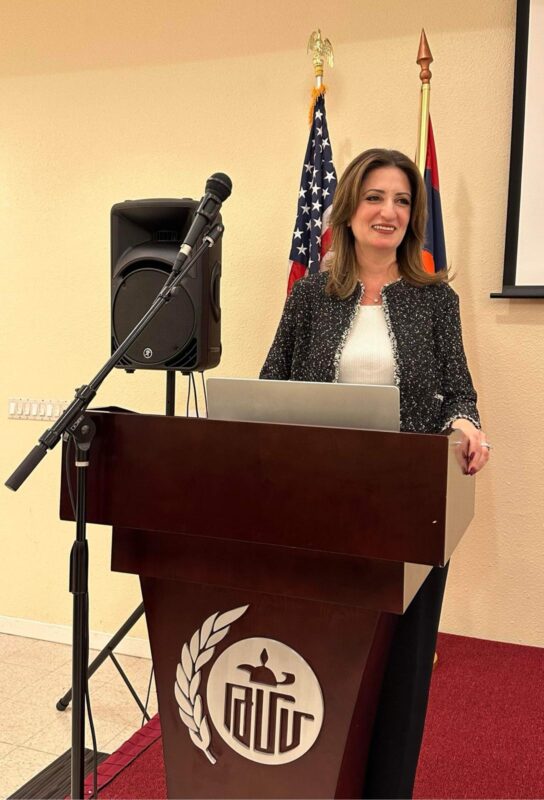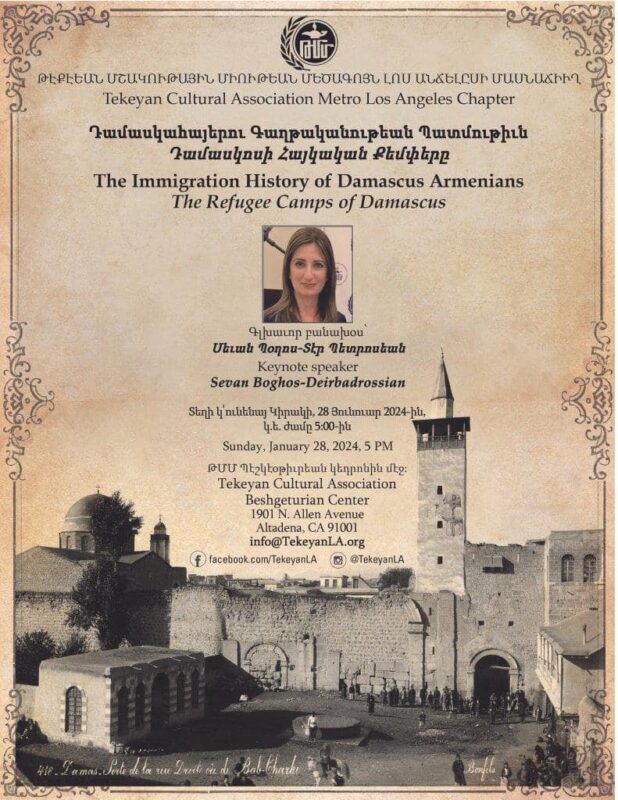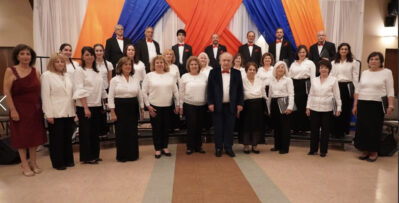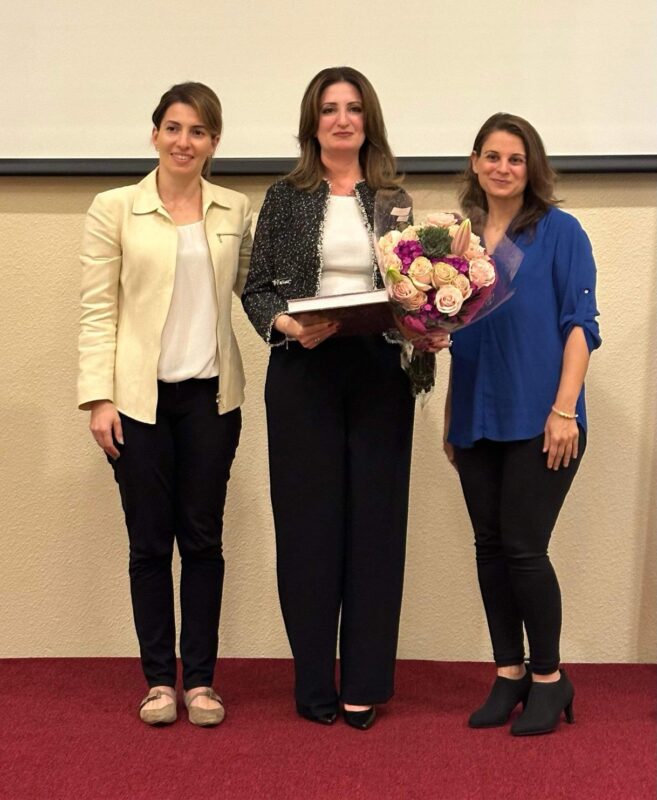ALTADENA, Calif. — An informative lecture on the immigration history of the Damascus Armenians and the Armenian refugee camps there was organized by Tekeyan Cultural Association (TCA) Metro Los Angeles chapter on Sunday, January 28 at the TCA Beshgeturian Center. The keynote speaker was Sevan Boghos-Deirbadrossian, vice chair of the TCA Metro Los Angeles chapter.

Master of ceremonies Hratch Sepetjian first invited University of California, Los Angeles student Alik Artinian to recite three prose-poems written in Armenian by Boghos-Deirbadrossian which are dedicated to her birthplace of Damascus. They were entitled “Observation,” “Return,” and “The Travelers Have Returned.”
Sepetjian then introduced Boghos-Deirbadrossian. She was born in Damascus, Syria, graduated from the Holy Translators School there, and then studied the English language at the University of Damascus. She taught English language for eight years at her alma mater, Holy Translators School.
Sevan is married to Hovig Deirbadrossian and have two children, Bedros and Nanor. The Deirbadrossian family immigrated to the United States and settled in Los Angeles from Damascus. Through correspondence, Sevan earned a master’s degree in Armenian Language from the Institute of Foreign Languages in France. She has been teaching Armenian Language and Literature for twenty years at the AGBU Manoogian-Demirdjian secondary school in Canoga Park, California.

Boghos-Deirbadrossian used slides of maps and pictures throughout her presentation. She said that practically since the beginning of time, Damascus has been a gateway for pilgrims heading to the Holy City of Jerusalem. She then divided the immigration history of Damascus Armenians into two phases: phase I, prior Christ (the era of Dikran the Great) to the 19th century, and phase II, from the 19th to the beginning of the 20th century.









